What to wear when gravel biking?
As with other types of cycling, gravel bikers benefit from well-fitting gravel bike clothing such as cycling shorts, and jerseys made from moisture-wicking materials, windproof vests, special cycling shoes and a combination of sunglasses and helmet. In this article, we look at some of the details that prospective gravel bikers should consider when buying their clothing and accessories.


Gravel Shorts
When cycling on gravel, the choice of shorts and saddle will determine how comfortable you feel and how long you enjoy your ride. The type of chamois that best suits your anatomy will vary from person to person. Ideally, the padding should not be too soft. Whether you prefer bib shorts with straps or prefer shorts without a bib is a matter of taste. Many riders like bib shorts because they don't cut into your stomach. This is particularly beneficial on gravel bikes with a very sporty riding position. There are more and more shorts on the market with extra side pockets to keep bars and other small items handy.
Leg warmers are great for cold days and in-between seasons to keep you warm. Long bib tights with windstopper inserts are useful in the colder months. They keep out the cold wind better than functional materials that are primarily designed to transport moisture.
There are also fans among recreational cyclists and bike packers who appreciate the combination of separate cycling underwear and casually cut cycling shorts. Especially when traveling, it is practical to be able to wear shorts without cycling underwear. These cycling briefs or shorts have a combination of padding and ultra-thin, breathable fabric, so they don't get too warm when you wear them under your regular cycling shorts. This is especially important in midsummer.
What not to do: wear conventional underpants under your padded cycling shorts. This will cause chafing, which can become infected.

Gravel jerseys
There are two key features of gravel jerseys: good moisture transfer and storage space in the form of back pockets. Jerseys are usually made from a highly breathable fabric to allow the body's air conditioning system to work effectively. The elastane content of the fabric gives both shorts and jerseys a sporty and comfortable fit.
Arm warmers are available for cooler days and can be quickly removed and stored in a jersey pocket. Long-sleeved jerseys are a better choice on consistently cold days and in winter.
Vests
Bike vests are the ace up your sleeve (or rather, in your jersey pocket) when it gets cooler. The wind chill effect is not to be underestimated when cycling. They are essential on days when the weather is unsettled, or when you set off very early or late and are exposed to temperature fluctuations.
Vests for gravel and road cyclists are small enough to pack away easily and quickly, and usually weigh less than 200 grams - often significantly less. They are available with light wind protection, reinforced wind protection, e.g. with GORE Windstopper fabric, or even with waterproof membranes. Insulated vests keep you warm in-between seasons and on cold days. In most cases, however, vests with light wind protection are sufficient.
Jackets
On days when the weather is unsettled, bike vests are often not enough. Lightweight road or gravel cycling jackets provide the necessary protection against wind and moisture. However, a distinction must be made between windproof jackets and waterproof jackets with a membrane. Riders who don't want to be deterred from gravel biking on rainy days are best advised to wear jackets with waterproof membranes. However, these are less breathable than pure windbreakers. It all depends on what you consider more important. For short showers, a windbreaker with a water and dirt-repellent treatment (DWR) is often sufficient. In winter, lightly insulated jackets with a windstopper fabric or membrane are an advantage.

Socks
Moisture-wicking cycling socks should fit snugly to prevent them from slipping inside your cycling shoes. Depending on your preference, socks can be cut a little longer. After all, they can be the fashionable finishing touch to your outfit.
The perfect gravel outfit: Our conclusion
Overall, gravel bikers are well advised to follow the onion principle when building their outfit. This means building up different layers to ensure optimum comfort on the bike. Textiles for gravel and road cycling differ from those for mountain biking or normal sports in that they are cut for a curved posture. That's why gravel and road jerseys, vests and jackets are much shorter in the front and longer in the back.
The materials available are synthetic fibres, natural fibres in the form of merino wool and a combination of the two. Clothing made from synthetic fibres wicks moisture away quickly. Clothing with a high merino content, thanks to the natural antibacterial properties of merino wool, reduces the development of unpleasant odours, but can feel wet on very intensive rides. Clothing made from a combination of merino wool and synthetic fibres attempts to combine the positive properties of both materials. Which material you prefer is more a matter of taste.

- new
 Gore WearSpirit Signal Chaos Shortsleeved Jersey Scrub Blue / Ultramarine Blue Women84,95 €Available Sizes:36384042
Gore WearSpirit Signal Chaos Shortsleeved Jersey Scrub Blue / Ultramarine Blue Women84,95 €Available Sizes:36384042 - new
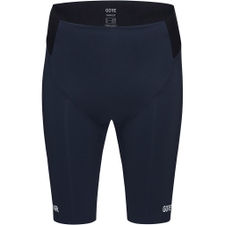 Gore WearSpinshift Short+ Tights Orbit Blue Women119,95 €Available Sizes:36384042
Gore WearSpinshift Short+ Tights Orbit Blue Women119,95 €Available Sizes:36384042
- new
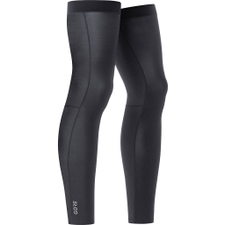 Gore WearC3 Leg Warmers Black39,95 €Available Sizes:SLXXL
Gore WearC3 Leg Warmers Black39,95 €Available Sizes:SLXXL - new
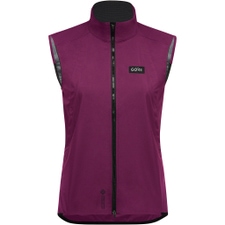 Gore WearEveryday Vest Process Purple Women99,95 €Available Sizes:36384042
Gore WearEveryday Vest Process Purple Women99,95 €Available Sizes:36384042
- new
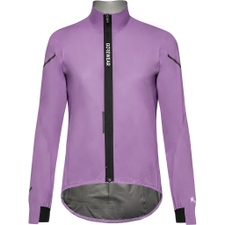 Gore WearSpinshift Gore-Tex Bike Jacket Scrub Purple Women249,95 €Available Sizes:36384042
Gore WearSpinshift Gore-Tex Bike Jacket Scrub Purple Women249,95 €Available Sizes:36384042

Sunglasses
Sunglasses with shatterproof lenses protect against UV, wind, dust, and insects. Models with interchangeable lenses allow flexible adjustment to the intensity of the sun. Sunglasses with self-tinting lenses eliminate the need to change lenses.
Gravel bike helmets
A well-ventilated helmet is also essential on a gravel bike. Look for helmets with adjustable straps for a secure and comfortable fit. Gravel bikers usually choose road bike helmets because they have better ventilation than mountain bike helmets, are more aerodynamic and have a more comfortable shape for the more crooked position on the bike. Mountain bike helmets have a larger surface area and offer more protection at the back of the head. Of course, casual gravel bikers can also use the MTB helmet they already own.
Gravel cycling shoes
The best bike shoe for your gravel needs depends on the type of terrain you ride frequently and whether you are a performance rider or more of a recreational cyclist. Due to the popularity of gravel bikes, manufacturers have been offering special gravel bike shoes for several seasons. These are just as sporty as road shoes, but have a better profile, so you can also make good progress on foot. This is particularly useful on rough terrain when you have to push or carry your bike. There are also more comfortable models suitable for touring. Some gravel enthusiasts prefer shoes without a click system and use flat pedals. Insulated cycling shoes keep your feet warm in cold weather and keep you dry.
Gloves
Gloves are something of an article of faith among gravel bikers. Gravel riders who come from a road background are often supporters of the no-gloves community. However, there are good reasons for wearing bike gloves: protection from injury in the event of a crash, protection from chafing and pressure points, and, when it gets cold, everyone turns to gloves – typically long ones with insulation and more weather protection.

- new
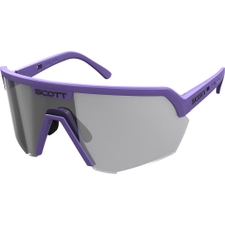 ScottSport Shield Light Sensitive Sunglasses Ultra Purple129,95 €One size
ScottSport Shield Light Sensitive Sunglasses Ultra Purple129,95 €One size - - 10 %new
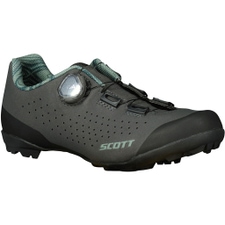 ScottGravel Pro Bike Shoes Dark Grey / Light Green WomenMSRP 139,95 €125,95 €Available Sizes:36,037,038,040,0
ScottGravel Pro Bike Shoes Dark Grey / Light Green WomenMSRP 139,95 €125,95 €Available Sizes:36,037,038,040,0 - new
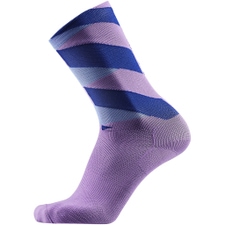 Gore WearEssential Signal Socks Scrub Purple / Ultramarine Blue Women17,95 €Available Sizes:40,043,0
Gore WearEssential Signal Socks Scrub Purple / Ultramarine Blue Women17,95 €Available Sizes:40,043,0
- - 8 %new
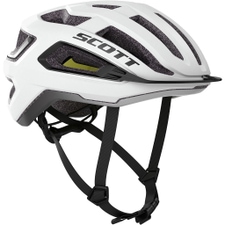 ScottARX Plus Bike Helmet White / BlackMSRP 119,95 €109,95 €Available Sizes:SML
ScottARX Plus Bike Helmet White / BlackMSRP 119,95 €109,95 €Available Sizes:SML - new
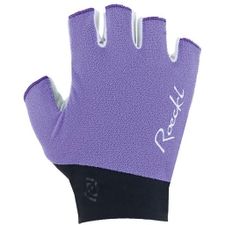 RoecklDeleni Bike Gloves Short Fairytale Women39,95 €Available Sizes:6,57,07,58,08,5
RoecklDeleni Bike Gloves Short Fairytale Women39,95 €Available Sizes:6,57,07,58,08,5




